
This liverwort is the 3rd species in the grouping from The Cliff that contained Dannorrisia bigelovii and Leucolepis acanthoneura. I was pretty sure it was a Porella when first I spied it, but under the microscope I started to doubt that because the ventral lobes were decurrent (bases running down the stem) which made me wonder if they were indeed lobes or if they were peripheral underleaves. But David Wagner helped me out yet again, and said it was actually a very typical example of Porella cordeana.
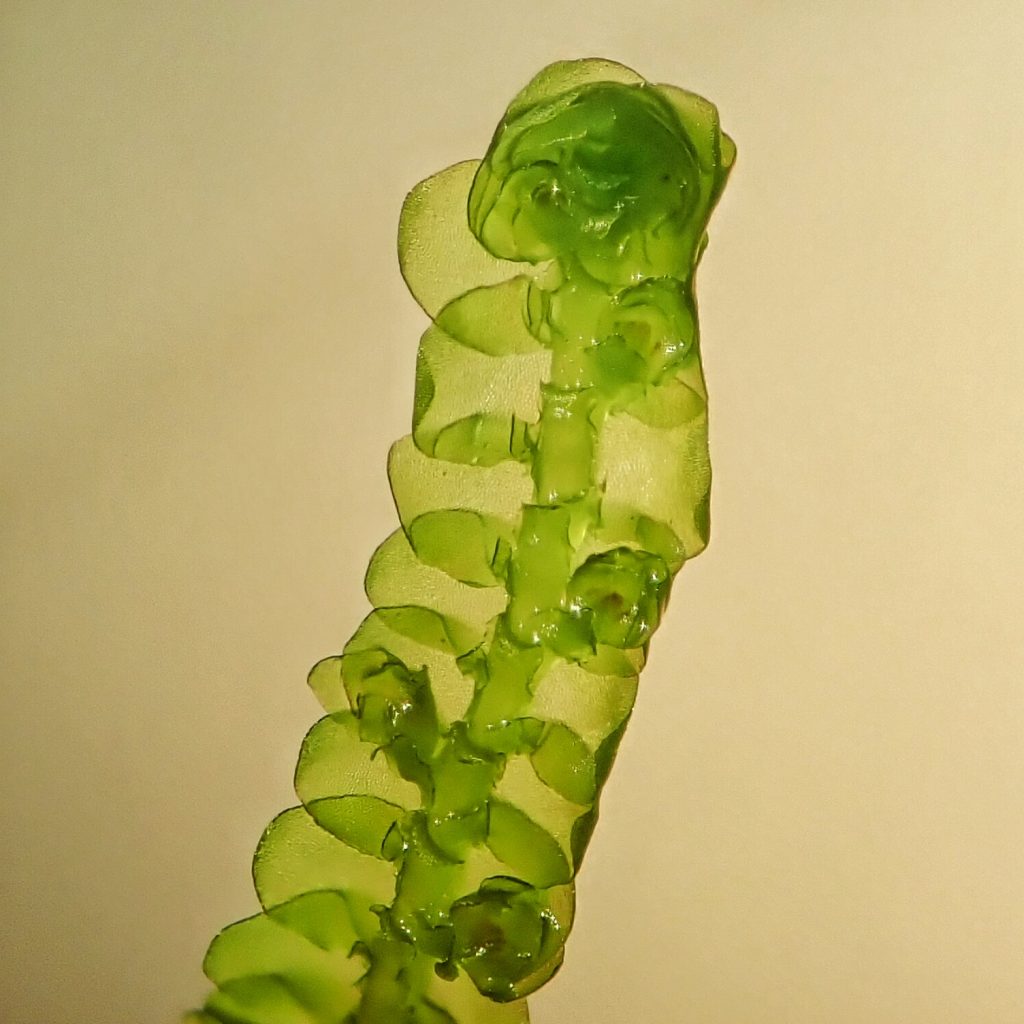
The wet notch where I found this is tucked away in a little gorge, facing north, with many large trees around, and may only get a total of a few hours of direct sunlight in an entire year. Now that’s what you call deep shade! And yet these organisms, that rely on photosynthesis for energy, not only survive but thrive here, eking out a living on the meager photons they can absorb to power the chemical reactions in their chloroplasts and make fuel from water and CO2. That is a quotidian and prosaic testament to the power of life itself.
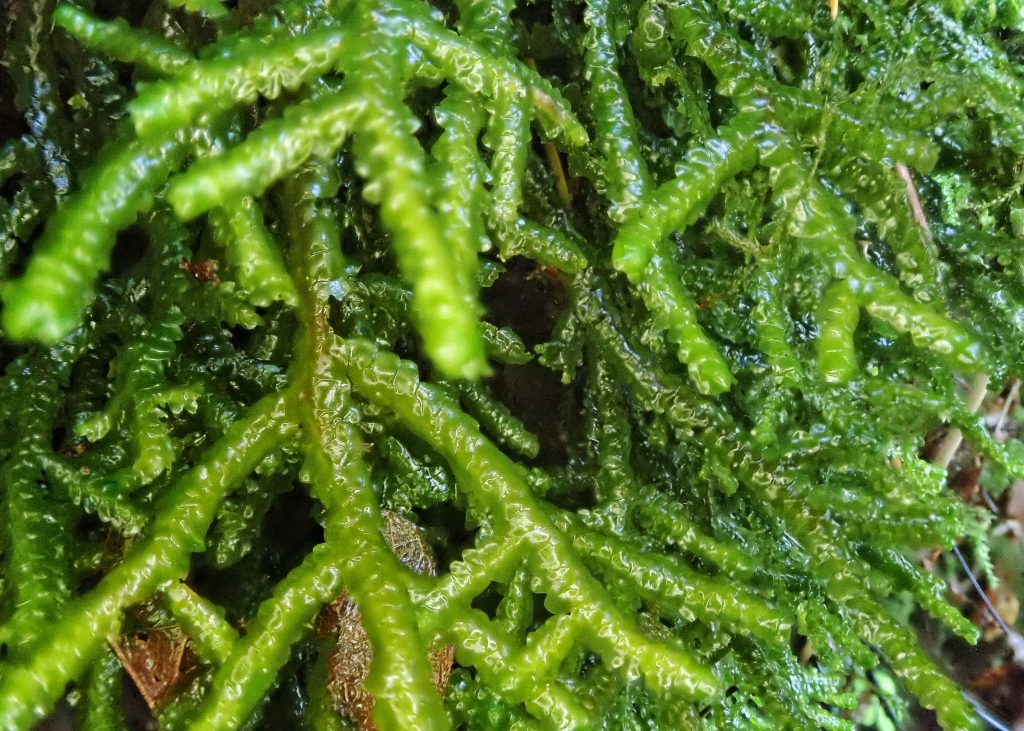
Description– Deep green shoots, up to 4 cm long; with shoot tip up the leaves are overlapping like a venetian blind turned up (incubous); leaves have a simple lobe at the base that is folded onto the ventral side; underleaves twice as wide as ventral lobes, roughly triangular , with flat edges, widely spaced so that the stem is usually visible, and decurrent for at least the same distance as they are free.
Similar species–P. roelli has a bitter, burning taste, noticeable in minute quantities; P. navicularis has inwardly rolled (revolute) margins on the underleaves; on these and all other porella the free aspect of the underleaves longer than decurrent section
Habitat-Found on rock, bark and wood, but not on soil, in mesic forests and riparian corridors.
Range-Region wide in appropriate habitat, except absent from the se quadrant of Oregon.
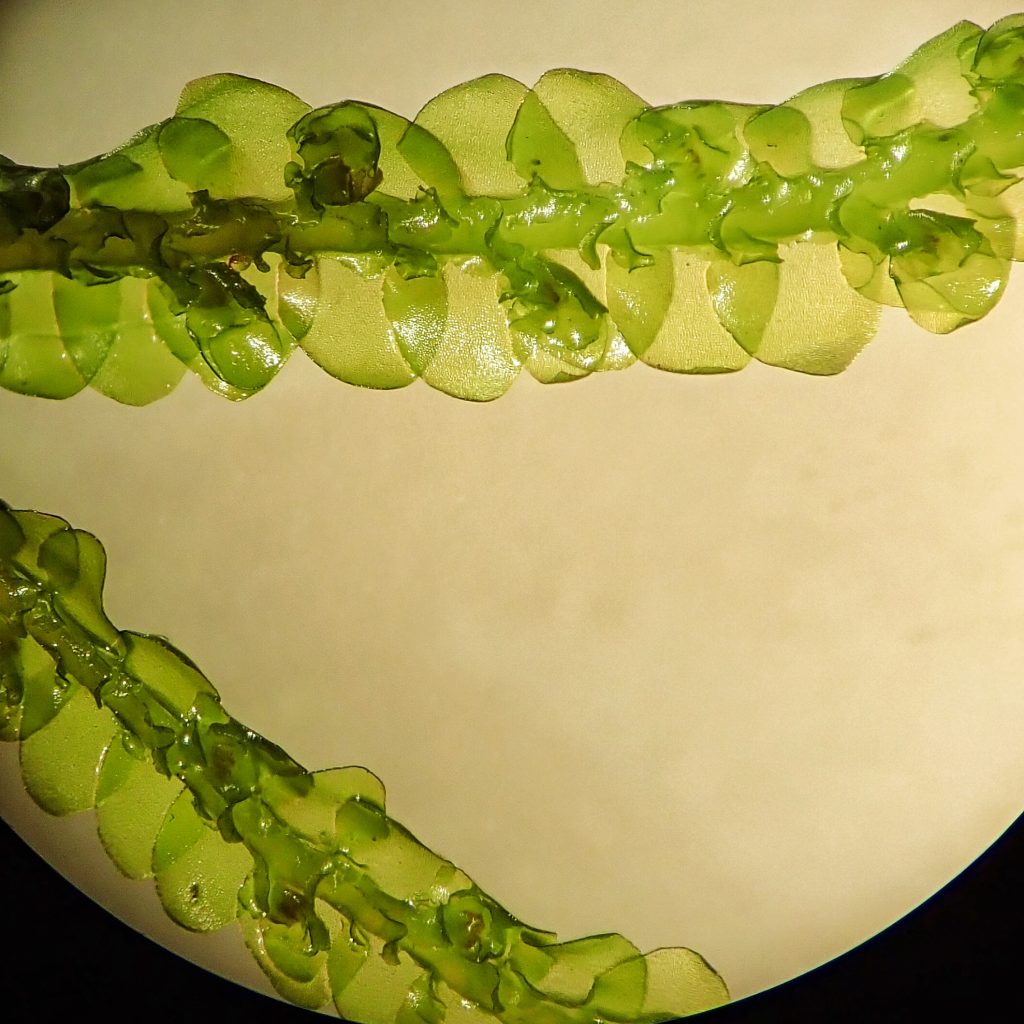
Reproductive timing-Winter to spring
Eaten by– Caurinus dectes, a relict species of scorpionfly belonging to a clade that stretches back to the Jurassic time period.
Etymology of names–Porella is Latin for small pores or openings, and was probably the result of a mistake by Dillenius, the original describer of the genus, whose only specimen was dried out and worn, having been shipped to him in Europe, via sailing vessel in the late 1700s, from Pennsylvania. What he mistook for ‘small pores’, were probably the remains of a desiccated and incomplete sporophyte. I can not ascertain what the epithet cordeana references. Cor is Latin for heart and the underleaves are vaguely heart shaped, so that may be the connection.
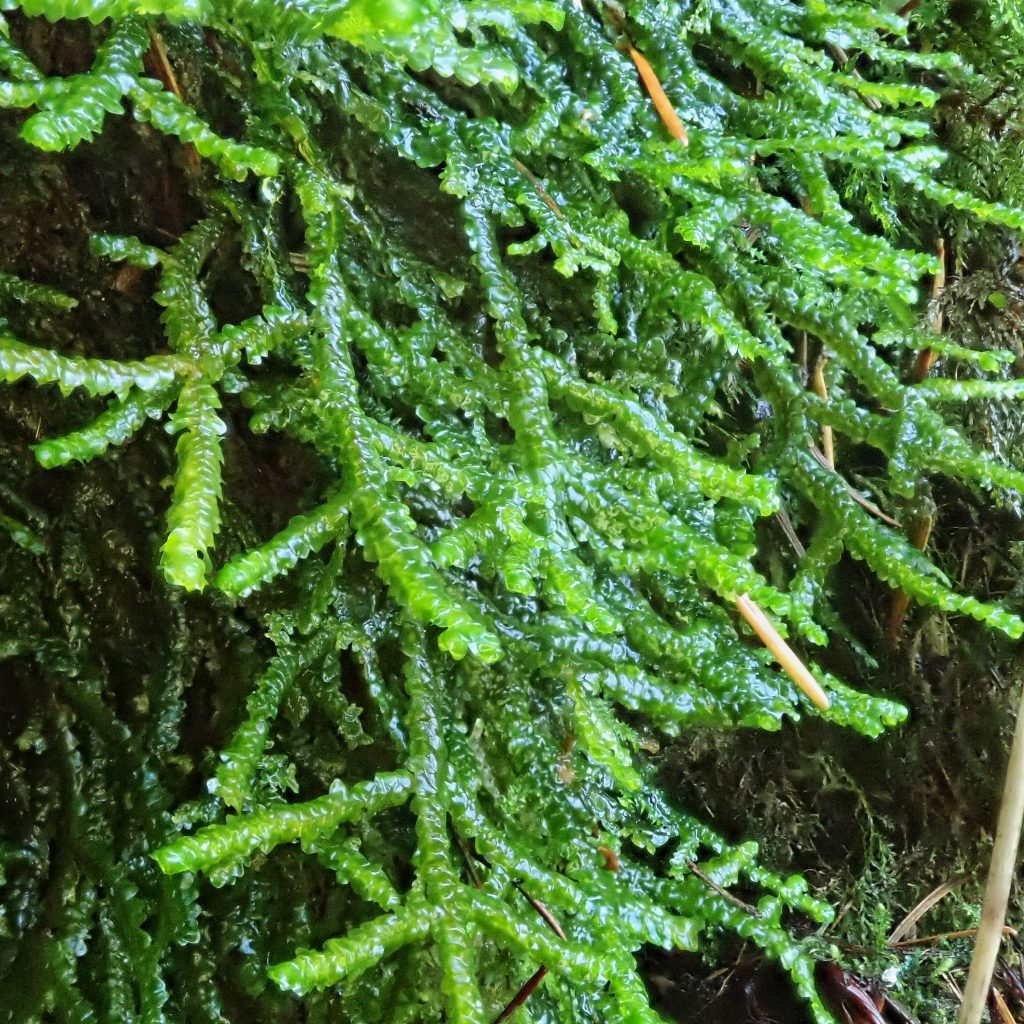
https://websites.rbge.org.uk/bbs/Activities/liverworts/Porella%20cordaeana.pdf
https://wnmu.edu/academic/nspages/gilaflora/porella_cordeana.html
https://pubs.acs.org/doi/abs/10.1021/np50096a016
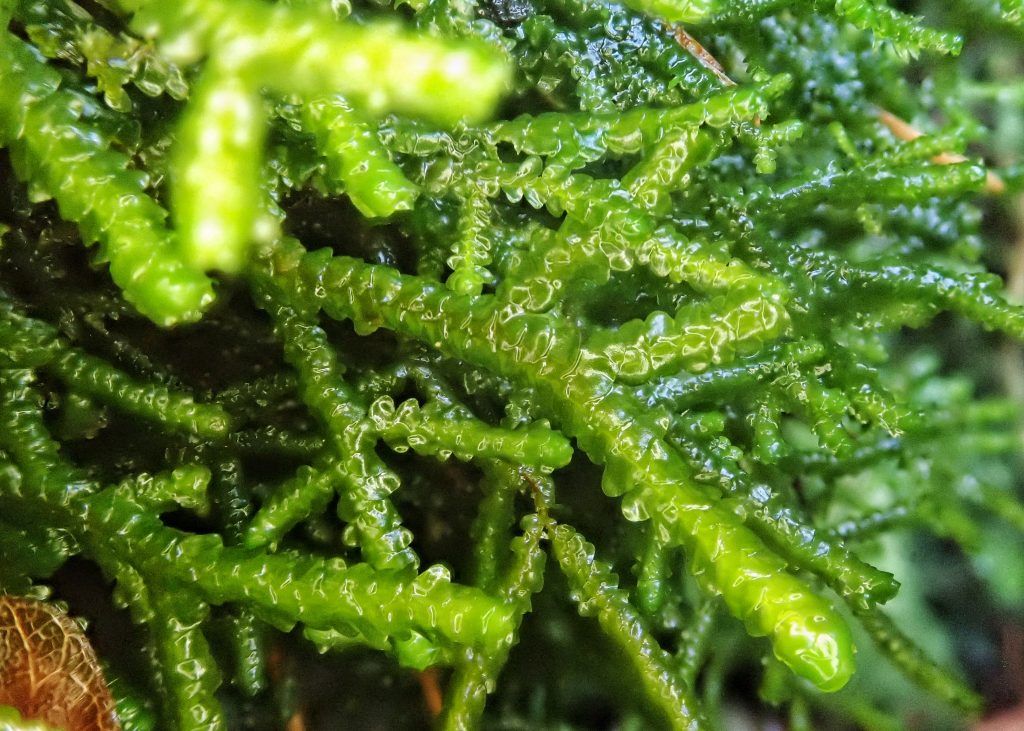
👍☺️